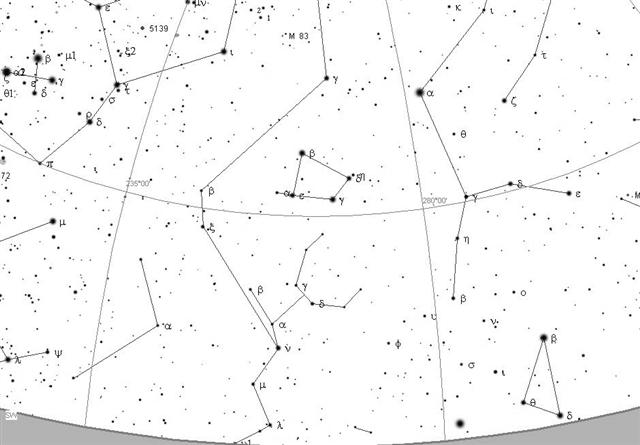3. Compared to the star map drawn from the northern point of view the descending sky in the south has the orientation of Corvus different - see at The Crater - with Kraz (β) at the top:
Thus Gienah (γ) seems to have been rising first, followed by Minkar (ε). But the right ascension for Gienah is a little higher for Gienah than for Minkar:
Allen: "Gienah is from Ulug Beg's Al Janāh al Ghurāb al Aiman, the Right Wing of the Raven, although on modern charts it marks the left. Algorab, given in the Alfonsine Tables to this star, is now usually applied to δ. γ is the brightest member of the constellation, and some Chinese authorities said that it alone marked their 11th sieu. It culminates on the 10th of May." A viri type of glyph probably indicates an important cardinal point in the text. Day 186 counted from spring equinox north of the equator is September 23 or 100 days before the end of the year (if counted from spring equinox):
There is another 'wing', Algenib Pegasi, to consider: ... [γ] ... marks the extreme tip of the Horse's wing, so that its name Algenib has been considered as derived from Al Janāh, the Wing ...
Gb6-28 (where we can read 200π) has also a γ star and the distance to 'the wing of Raven' is 183 days. In the sky maps a 'wing' seems to indicate a cardinal point of importance. Or maybe wings are sectors of the sky (cfr in Orientation):
|










